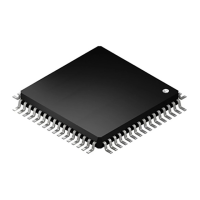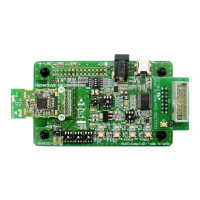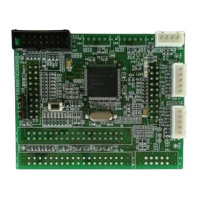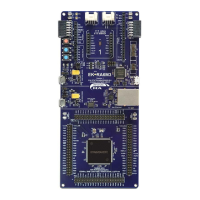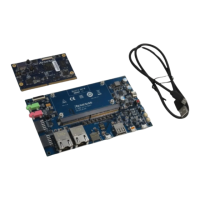RL78/F13, F14 CHAPTER 15 SERIAL ARRAY UNIT
R01UH0368EJ0210 Rev.2.10 1005
Dec 10, 2015
15.9.3 Data reception
Data reception is an operation to receive data to the target for transfer (slave) after transmission of an address field. After
all data are received to the slave, a stop condition is generated and the bus is released.
Simplified I
2
C
IIC00 IIC01 IIC10 IIC11
Target channel Channel 0 of SAU0 Channel 1 of SAU0 Channel 0 of SAU1 Channel 1 of SAU1
Pins used SCL00, SDA00
Note
SCL01, SDA01
Note
SCL10, SDA10
Note
SCL11, SDA11
Note
Interrupt INTIIC00 INTIIC01 INTIIC10 INTIIC11
Transfer end interrupt only (Setting the buffer empty interrupt is prohibited.)
Error detection flag Overrun error detection flag (OVFmn) only
Transfer data
length
8 bits
Transfer rate Max. fMCK/4 [Hz] (SDRmn[15:9] = 1 or more) fMCK: Operation clock frequency of target channel
However, the following condition must be satisfied in each mode of I
2
C.
• Max. 400 kHz (first mode)
• Max. 100 kHz (standard mode)
Data level Forward output (default: high level)
Parity bit No parity bit
Stop bit Appending 1 bit (ACK transmission)
Data direction MSB first
Note To perform communication via simplified I
2
C, set the N-ch open-drain output (EVDD0 tolerance) mode (POMxx = 1)
for the port output mode registers (POMxx) (see 4.3 Registers Controlling Port Function for details). When IIC00,
IIC01, IIC10, IIC11 communicating with an external device with a different potential, set the N-ch open-drain output
(EV
DD0 tolerance) mode (POMxx = 1) also for the clock input/output pins (SCL00, SCL01, SCL10, SCL11) (see 4.4.4
Connecting to external device with different potential (3 V) for details).
Remark m: Unit number (m = 0, 1), n: Channel number (n = 0, 1), mn = 00, 01, 10, 11

